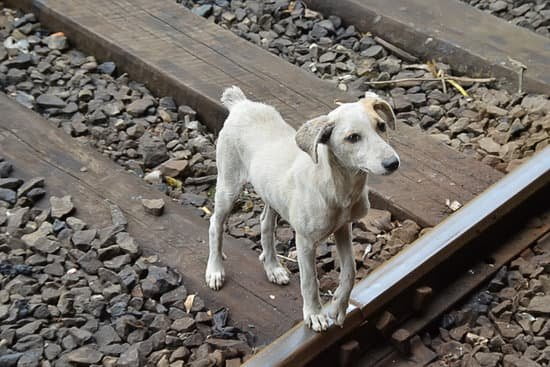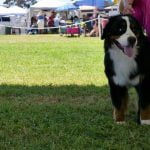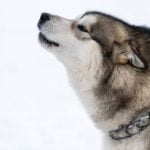Hunting hogs can be an exhilarating and challenging experience, requiring the right skills, equipment, and of course, the perfect hunting companion. While there are various methods for hunting these formidable creatures, having a well-trained dog by your side can make all the difference. In this article, we will dive into the essential steps and techniques to train a dog for hog hunting.
Proper training is crucial when it comes to hog hunting. It not only ensures that your dog behaves appropriately in the field but also maximizes their performance and safety. A well-trained dog understands its role, follows commands reliably, and has the discipline to tackle challenging situations. The benefits of a trained hog hunting dog go beyond just assistance during hunts; they become trusted companions that are capable of tracking and locating hogs with precision.
Before delving into specific training techniques, it’s important to choose the right breed for hog hunting. While any dog can potentially be trained for hog hunting, certain breeds possess innate characteristics that make them more suitable for this task. We will explore different breeds commonly used in hog hunting and discuss the key attributes to look for when selecting your ideal partner.
Selecting the Right Breed for Hog Hunting
When it comes to hog hunting, selecting the right breed of dog is essential. Different breeds have different strengths and characteristics that make them suitable for this type of hunting. Here are some common breeds that are often used for hog hunting:
- Catahoula Leopard Dog: This breed is known for its intelligence, loyalty, and excellent tracking skills. Catahoulas are fearless working dogs that excel in locating and holding hogs until the hunter arrives.
- Black Mouth Cur: Black Mouth Curs are versatile and highly athletic dogs that possess a strong prey drive. They have a natural instinct for hunting hogs and handle well in rugged terrains.
- American Pit Bull Terrier: Pit Bulls are tenacious, energetic, and powerful dogs that make great hog hunting companions. They have a strong prey drive and their muscular build allows them to confront hogs effectively.
- Plott Hound: Plott Hounds are known for their exceptional tracking abilities. They have a keen sense of smell and excel at trailing wounded hogs over long distances.
- Rhodesian Ridgeback: Originally bred as a lion-hunting dog, the Rhodesian Ridgeback is courageous, strong-willed, and has excellent endurance. They work well in groups and can be trained to bay or catch hogs.
Aside from specific breeds, some general characteristics to look for in hog hunting dogs include stamina, fearlessness, intelligence, trainability, agility, and good scenting abilities.
| Breed | Characteristics |
|---|---|
| Catahoula Leopard Dog | Intelligent, loyal, excellent tracking skills |
| Black Mouth Cur | Versatile, athletic, strong prey drive |
| American Pit Bull Terrier | Tenacious, energetic, powerful |
| Plott Hound | Exceptional tracking abilities, keen sense of smell |
| Rhodesian Ridgeback | Courageous, strong-willed, excellent endurance |
Basic Obedience Training
When training a dog to hunt hogs, basic obedience training is essential. Teaching your dog obedience commands not only ensures their safety but also contributes to a successful hog hunting experience. Dogs that are well-trained in basic obedience are more likely to follow instructions and respond in high-pressure situations.
The first step in basic obedience training for hog hunting is teaching your dog essential commands such as sit, stay, and recall. These commands will help you maintain control over your dog in different scenarios during the hunt. For example, the “sit” command can be used to keep your dog calm and controlled while waiting for hogs to be located.
The “stay” command is crucial when you need your dog to remain still and quiet during specific portions of the hunt. Lastly, the “recall” command is vital for calling your dog back to you when necessary.
Consistency and positive reinforcement are key aspects of basic obedience training. Use rewards like treats or verbal praise to reinforce good behavior when your dog follows a command correctly. Additionally, regular practice sessions should be incorporated into your training routine to ensure that your dog retains these commands consistently.
| Obedience Command | Description |
|---|---|
| Sit | The dog sits down on command and remains in that position until released |
| Stay | The dog stays in one place until given permission to move |
| Recall | The dog immediately comes back to its owner when called |
Remember, having a strong foundation in basic obedience training is essential before moving on to more advanced skills and techniques for hog hunting. Mastering these commands will not only ensure your dog’s safety but also greatly enhance their ability to assist you effectively during the hunt.
Socializing Your Dog
Socialization plays a crucial role in training a dog to hunt hogs. It is important to introduce your dog to various environments, people, and animals to ensure they are comfortable and confident while out in the field. In this section, we will discuss the significance of socialization in hog hunting and provide some tips for introducing your dog to different situations.
The Significance of Socialization in Hog Hunting
When hunting hogs, dogs often encounter different environments and situations that they may not be familiar with. By socializing your dog from an early age, you can help them develop the necessary skills to adapt and handle these new experiences effectively. A well-socialized dog is more likely to remain calm and focused during a hunt, making it easier for them to track hogs efficiently.
Moreover, socialization helps prevent fear or aggression towards unfamiliar people or animals. This is important when encountering other hunters or wildlife while hog hunting. A dog that is comfortable around others is less likely to become distracted or reactive, allowing them to stay focused on their hunting task.
Introducing Your Dog to Various Environments, People, and Animals
To socialize your dog effectively for hog hunting purposes, expose them to a wide range of environments early on. Take them for walks in different terrains such as fields, forests, and wooded areas. Gradually increase the level of difficulty by exposing them to louder noises like gunshots or ATV engines.
Introduce your dog gradually to people of all ages, including children. Encourage friendly interactions and reward positive behavior with treats or praise. Similarly, expose your dog safely to other dogs or animals they may encounter during a hunt. This could include farm animals like pigs or goats for familiarity with animal smells and behaviors.
Additionally, consider enrolling your dog in obedience classes or group training sessions specific for hunting breeds. These environments provide an opportunity for your dog to interact with other dogs and their owners while learning new skills. It also helps reinforce basic obedience commands in a distracting setting, preparing them for real hunting scenarios.
Remember, the key to socializing your dog is positive reinforcement and gradual exposure. Ensure that each experience is a positive one for your dog, and never force them into a situation that causes fear or distress. By taking the time to socialize your hog hunting dog properly, you are setting them up for success in the field.
Scent Training for Hog Hunting
Scent training is an essential aspect of training a dog to hunt hogs. Hogs have a strong sense of smell and rely heavily on scent to navigate their surroundings, making it crucial for your dog to be able to detect and follow the scent of hogs in the field. In this section, we will explore the importance of scent detection in hog hunting and discuss techniques for introducing scent to your dog.
The Importance of Scent Detection in Hog Hunting
Hogs are known for their keen sense of smell, which they use for various purposes, including finding food and avoiding danger. When hunting hogs, your dog’s ability to detect and follow the scent trail left by hogs can greatly contribute to a successful hunt. By locating and alerting you to the presence of hogs, your dog becomes an invaluable asset in hog hunting.
Techniques for Introducing Scent to Your Dog
To train your dog to track and locate hogs based on their scent, you will need to introduce them gradually to the specific scent associated with hogs. One effective technique is using a piece of cloth or material that has been rubbed against a hog or soaked in hog urine as a training aid. Start by allowing your dog to sniff the scented material, rewarding them with treats or praise when they show interest.
As your dog becomes more familiar with the scent, you can progress to hiding scented objects in various locations for your dog to find. This encourages them to use their nose actively and build confidence in tracking scents associated with hogs. Gradually increase the difficulty level by placing the scented object in areas with more distractions or covering it with foliage.
Remember that consistency is key when it comes to scent training. Regularly practice scent detection exercises with your dog so that they continuously sharpen their skills and maintain their ability to track hogs effectively.
Conclusion:
Mastering scent training is indispensable when training a dog to hunt hogs. By understanding the importance of scent detection in hog hunting and implementing effective techniques for introducing scent to your dog, you can maximize their potential as a hunting companion. In the next section, we will explore the crucial skills of tracking and locating hogs in the field.
Tracking and Locating Hogs
Tracking and locating hogs is a critical skill that every hog hunting dog must possess. This section will discuss the training techniques and methods you can use to teach your dog how to track and locate hogs in the field.
One effective technique for tracking hogs is utilizing scent trails. Hogs have a strong odor, and their scent can be easily detected by a well-trained dog. To introduce scent tracking to your dog, you can start by using fresh hog droppings or scent from a dead hog. Place these scents on the ground and encourage your dog to sniff them out. Start with short trails at first and gradually increase the length as your dog becomes more proficient.
Another method for training your dog to track and locate hogs is through sight recognition. This involves exposing your dog to pictures or videos of hogs and encouraging them to focus on the target. You can initiate this training indoors by showing pictures or playing videos of hogs while giving commands such as “find it” or “hunt it.” Gradually transition this training outdoors, where you can practice in a controlled environment before advancing to real-life hunting situations.
In addition to scent trails and sight recognition, utilizing other techniques like exposing your dog to hog tracks and practicing grid searches can further improve their tracking abilities. Hog tracks mimic real-life scenarios, giving your dog an opportunity to follow tracks left behind by hogs. Grid searches involve dividing an area into small sections for search purposes, allowing your dog to systematically cover the entire area until they locate the target.
Remember, consistency and patience are key when teaching your dog how to track and locate hogs. Each training session should be kept short but frequent, ensuring that you build upon previous lessons before progressing further. With time, practice, and reinforcement, your dog will develop the necessary skills to become a reliable tracker in hog hunting adventures.
By mastering the art of tracking and locating hogs with your canine companion, you will greatly enhance your chances of a successful hog hunting experience.
Prey Drive and Confidence Development
One crucial aspect of training a dog to hunt hogs is developing their prey drive and building their confidence in challenging situations. Prey drive refers to the natural instinct that dogs have to pursue and capture prey, making it a fundamental trait for a successful hog hunting dog. Confidence development, on the other hand, ensures that your dog remains focused, determined, and unaffected by any potential obstacles or distractions during the hunt.
To enhance your dog’s prey drive for hog hunting, there are several techniques you can employ. One effective method is incorporating interactive play sessions into your training routine. Engaging your dog in games such as tug-of-war or fetch helps tap into their natural hunting instincts and strengthens their prey drive. You can also use training tools like flirt poles or scent-drenched toys to simulate the chase and reinforce their desire to hunt.
Building your dog’s confidence is equally important when it comes to hog hunting. Exposure to challenging situations gradually over time will help increase their self-assurance. Introduce them to various environmental elements they may encounter during hunts such as different terrains, dense foliage, or bodies of water. This exposure will acclimate them to different conditions they may face in the field, preparing them mentally and physically.
It’s crucial to remain patient throughout this process and not push your dog too hard too quickly. Each dog progresses at its own pace, so it’s essential to tailor your training methods accordingly. As you continue working on developing both prey drive and confidence in your dog, remember to reward them for their successes and provide consistent positive reinforcement.
By focusing on developing your dog’s prey drive while also building their confidence in challenging situations, you’ll be setting the foundation for a successful hog hunting experience together. In the next section, we will explore advanced training techniques required for effective hog hunting with your well-prepared canine partner.
Advanced Training Techniques for Hog Hunting
Once your dog has mastered the basic obedience commands and is comfortable with socializing and scent training, it’s time to move on to advanced techniques for hog hunting. These techniques will further enhance your dog’s skills and make them more effective in the field.
One crucial aspect of advanced training for hog hunting is teaching your dog to confront and control hogs. This involves training them to hold their ground when faced with a hog, as well as showing them how to safely engage with the animal without getting injured.
To accomplish this, you can use specialized equipment such as protective vests or barrels designed for controlled contact. It’s important to start this type of training gradually and ensure that your dog is always protected from harm.
In addition to confronting hogs, advanced commands and skills are required for effective hog hunting. These may include teaching your dog to flush out hogs from dense vegetation, tracking multiple hogs simultaneously, or even engaging in physical combat with an unruly hog. These advanced techniques will require a greater level of trust and obedience from your dog, so be sure to build a strong foundation through consistent training.
Keep in mind that advanced training techniques should always prioritize safety for both you and your dog. It’s important to use caution when working with live hogs and seek professional guidance if needed. Additionally, be aware of potential risks such as injuries from tusks or wild hogs charging unexpectedly. Always have a plan in place in case of emergencies during a hunt.
By incorporating these advanced training techniques into your dog’s regimen, you will improve their abilities as a hog hunting companion. Remember that practice makes perfect; continuous reinforcement combined with realistic field experience is essential for honing these skills. With dedication, patience, and proper guidance, you’ll have a reliable partner by your side during thrilling hog hunts.
Safety and Precautions in Hog Hunting
Hog hunting can be an exhilarating and challenging experience, but it is crucial to prioritize safety and take necessary precautions to protect both yourself and your dog. Understanding the potential risks and hazards associated with hog hunting is essential before embarking on this adventure.
First and foremost, it is important to equip yourself with the right gear and protective clothing. A good quality helmet, sturdy boots, gloves, and thick clothing can provide valuable protection against tusks and other possible injuries. Ensure you have a reliable weapon suitable for hog hunting and practice proper firearm safety at all times.
When training your dog for hog hunting, it is important to prioritize their safety as well. Begin by introducing your dog gradually to the environment they will be exposed to during hunts. Start with short sessions in a controlled area before progressing to more challenging terrains. It’s also crucial to ensure your dog has proper identification tags and collars with contact information in case they were to become lost during a hunt.
Another key aspect of safety in hog hunting is being prepared for emergencies. Before heading out on a hunt, make sure you have a first aid kit readily available that includes items such as bandages, antiseptic solution, tweezers, and wound dressings. Familiarize yourself with basic first aid techniques for dogs so that you’re prepared should an injury occur.
Additionally, it’s important to have a plan in place for handling wounded or injured hogs. Wounded hogs can be dangerous, so it’s crucial to know how to safely approach them or when it may be necessary to call for professional assistance. Always prioritize the safety of yourself and your dog above all else.
By prioritizing safety measures and taking necessary precautions, you can ensure a safe and enjoyable hog hunting experience for both you and your dog. Remember that safety should always be the top priority while engaging in any outdoor activity, especially one that involves potentially dangerous wildlife like hogs.
Conclusion
In conclusion, training a dog to hunt hogs is a skill that requires dedication, patience, and a deep understanding of the hunting process. Throughout this guide, we have highlighted the importance of proper training for hog hunting and the benefits of having a well-trained dog in this endeavor.
Selecting the right breed for hog hunting is crucial, as different breeds have different characteristics that make them more suitable for this activity. Basic obedience training is essential for establishing control and communication between you and your dog during hunts. Teaching commands such as sit, stay, and recall will ensure that your dog follows your instructions even in high-pressure situations.
Socialization plays a vital role in hog hunting as it exposes your dog to various environments, people, and animals. This exposure helps them remain calm and focused when encountering unknown elements during hunts. Additionally, scent training is key for detecting hogs in the field. By introducing scents to your dog and teaching them how to track using scent trails, you enhance their hunting skills.
Developing prey drive and confidence are essential aspects of training a hog hunting dog. Building their instinctual desire to chase after prey and boosting their confidence in challenging situations will greatly improve their performance on hunts. Furthermore, advanced training techniques can be employed to teach dogs how to confront and control hogs effectively.
It is important to remember that safety should be prioritized throughout the entire hog hunting process. Taking precautionary measures to protect both yourself and your dog from potential risks and hazards is crucial. It is always recommended to seek guidance from experienced hunters or trainers before embarking on your own hog hunting journey.
In summary, mastering the art of training a hog hunting dog takes time but can be an incredibly rewarding experience for both you and your canine companion. By following the steps outlined in this guide and being consistent in your training efforts, you can develop a highly skilled and reliable hog hunting partner. Good luck on your journey.
Frequently Asked Questions
What dog breed can hunt wild boar?
One of the dog breeds that are commonly used for hunting wild boar is the American Pit Bull Terrier. Known for their strength, tenacity, and agility, these dogs have a strong prey drive that makes them highly effective in chasing down and holding onto boars until the hunter arrives.
Their muscular build and determination enable them to engage with powerful game and withstand the challenges posed by this type of hunt. It is important to note that hunting wild boar requires trained dogs, as it can be a dangerous task both for the dog and the human involved.
How do you make a good hog dog?
Creating a good hog dog involves careful selection, training, and socialization. The foundation of a successful hog dog starts with a breed that possesses the desired traits for hunting hogs, such as strength, stamina, intelligence, and a strong prey drive. Once you have selected an appropriate breed or mix, it’s crucial to provide consistent training from an early age to develop obedience, recall commands, and basic hunting skills.
Additionally, regular exercise is essential in building endurance and maintaining physical fitness. Furthermore, proper socialization with other dogs and exposure to various environments helps prevent aggressive behavior towards other animals or humans during hunts.
How do you start training a hunting dog?
When initiating training for a hunting dog, patience and consistency are key principles to follow. Start by establishing a bond built on trust between you and your dog through positive reinforcement techniques such as treats or praise. Begin with basic obedience commands like sit, stay, come, and heel before progressing to more advanced training methods specific to hunting tasks.
Introduce your dog to different scents related to the type of game they will be searching for during hunts. Gradually expose them to controlled environments where they learn to track scents while obeying voice commands. It’s important to remember that training should be done gradually over time with short sessions each day rather than overwhelming your dog with too much information all at once.

Welcome to the blog! I am a professional dog trainer and have been working with dogs for many years. In this blog, I will be discussing various topics related to dog training, including tips, tricks, and advice. I hope you find this information helpful and informative. Thanks for reading!





